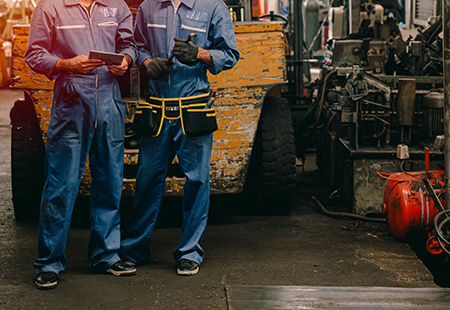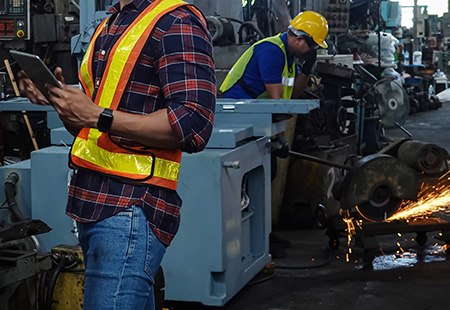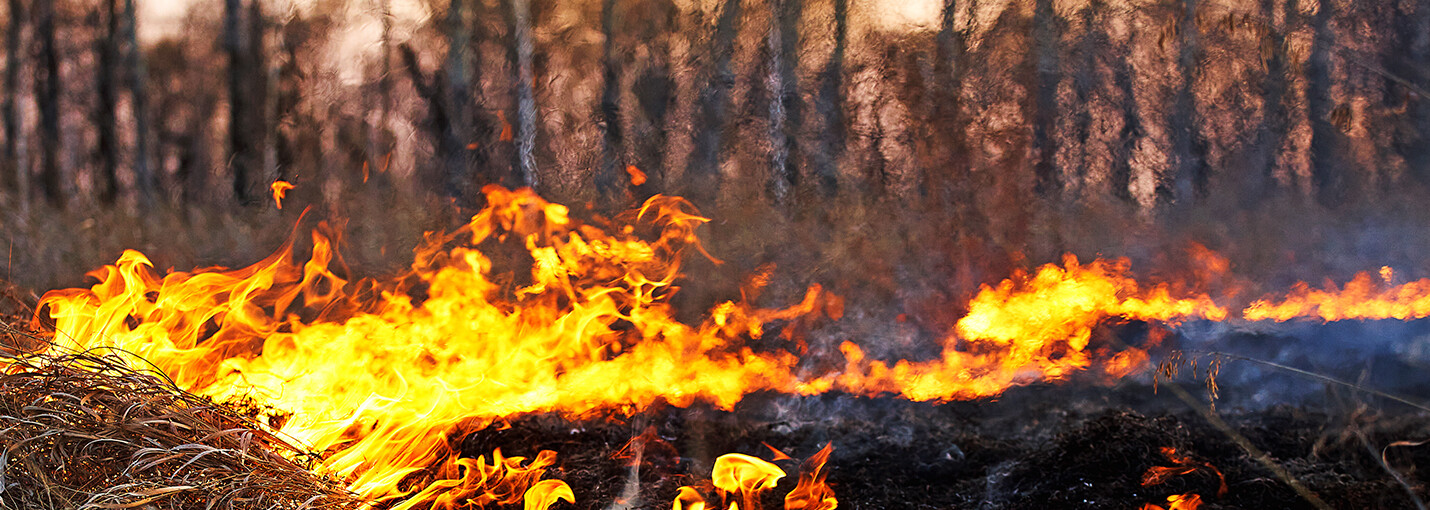Asbestos in Maui’s Wildfire Ash
The Hawaii State Department of Health issued a warning that wildfire ash could be contaminated with harmful asbestos.
Recent wildfires have devastated Maui, with a significant death toll. But another danger lurks: Asbestos.
Maui, the second largest Hawaiian island, is renowned for its natural beauty, lush landscapes, and vibrant culture. Sadly, this paradise has been recently ravaged by wildfires. Climate change and prolonged droughts have exacerbated the situation, rendering the island more susceptible to fire outbreaks.
The death toll from last week’s Maui fires is the highest the United States has seen from wildfires in over a century. Survivors wanting to return to the island and sift through the remains of a life gone up in flames, are still not free of danger. Amidst the ongoing wildfire devastation, Hawaii’s Department of Health has issued a warning over toxic substances in the ash raining down on the state, including the cancer-causing mineral asbestos. 1
!
If you believe that you were exposed to asbestos, even as a child, speak to a healthcare provider about tests and screening to help diagnose lung-scarring and screen for asbestos-related diseases.
The Department of Health warned the toxic ash can cause irritation of the skin, nose, and throat and recommends individuals returning to Maui wear tight-fitting respirator masks such as the N95. The long-term effects of asbestos exposure are significantly more dangerous than irritation from toxic ash.
| Asbestos is highly resistant to heat, pressure and corrosion, so it was used in many products, vehicles and buildings. In particular, many workplaces like factories, refineries, foundries and shipyards involve high amounts of heat, and were built with a lot of asbestos. | |||
 |  |  |  |
What exactly is asbestos?
(And why is it still a problem in Maui and elsewhere?)
Asbestos was once a widely used mineral in construction materials such as insulation, ceiling and floor tiles, drywall, shingles, etc. Asbestos is very durable because it is resistant to heat, corrosion, and electricity, which made it a great building companion. However, asbestos’s durability is also what makes it a dangerous substance. The fibers do not evaporate or dissolve in water and can stay in the body forever.
Most people are unaware they are breathing in asbestos because it has no taste or smell. Once the fibers enter the body, they cause damage over time leading to asbestos-related illnesses sometimes decades later. Asbestos fibers are like tiny needles puncturing the lungs and other tissue creating scar tissue leading to diminished lung capacity and chronic, potentially fatal, illnesses including cancers such as lung, mesothelioma, stomach, and colon cancer among others.2
The public was not made aware that asbestos is a carcinogen until the 1970’s, however the asbestos industry knew since the 1930s.
“The overall evidence suggests there is no safe level of asbestos exposure.”Source: National Cancer Institute (NIH)3 |
When the truth came out, thanks to asbestos lawsuits, it still took the United States government until 1989 to officially ban its use.4 Even then contractors were not required to destroy their supplies meaning it is possible asbestos was still used in renovations and building up to a decade after that.
 |
| Nearly every building constructed before the mid-1980s contained asbestos products and building materials. |
 |
Some reports estimate there are still over 30 million homes in the U.S. containing life-threatening asbestos.
One reason so many buildings still have asbestos is because in the Unites States landowners are not always obligated to remove asbestos and are only required to disclose its presence. Homes in Hawaii are among those 30 million, which was one of the reasons the Department of Health issued the warning to its residents.
| Asbestos causes cancer. Health researchers are learning how. Studies show that asbestos fibers embed in the bodily tissue:
|
Potential health risks of inhaling or ingesting asbestos fibers
The presence of asbestos in the environment has long been a topic of concern due to its potential health risks. Its extensive use in the past has led to concerns about the release of asbestos fibers into the air, which can be inhaled causing the severe health issues discussed earlier.
Because of the extensive past use of asbestos, and the increasing age of these products, the potential for exposure to asbestos fibers in both indoor and outdoor environments remains high, even while the actual asbestos exposure levels are mostly very low.
Asbestos has no taste or smell.
You may not know you’re breathing it.

Sources of these exposures include disturbance of in situ asbestos-containing materials (ACMs), for example during renovations or following disaster events such as fires, cyclones, and floods.”5 Part of asbestos’s durability is its heat resistance, so it does not burn with the rest of the materials in a fire. However, fire does cause asbestos fibers to release into the air, as is the case with the Maui ash.
To understand the concentration of asbestos fibers in external air, it is important to understand the levels of asbestos dust concentration in various types of buildings.
The concentration of the asbestos dust varies depending on factors such as construction type, materials used, and the extent of degradation. “The level of pollution of asbestos dust inside buildings, [which] accompanies the normal exploitation, is at least 1000 times lower than the levels of concentrations created during the removal of these products.
“All forms of asbestos are carcinogenic to humans.” 6
It is critical to use proper protection when dealing with asbestos in old buildings.
If the contractor does not have an effective (organizational and technical form of dust elimination, with effectiveness confirmed by control tests during works and after completion of works) – removal of asbestos products from the building should be prohibited.”7 Moreover, external air surrounding buildings also contains asbestos fibers, contributing to potential exposure risks for people in the vicinity.

Libby, Montana: An asbestos cautionary tale
The small town of Libby in Montana is a sobering representation of this. Libby once had active asbestos mines where its management company W.R. Grace & Company failed to disclose asbestos and its risks to the miners. Both the miners and their families developed asbestos-related illnesses because the dust can attach itself to clothing, car and household upholstery, etc.
However, researchers discovered that not all the residents experiencing asbestos-related diseases were miners or even family members of miners. Almost half of all the residents who consented to screening in Libby were found to have asbestos-related pleuropulmonary disease. These illnesses were caused by living in close proximity to the mines where there was no active asbestos ash flying around. 8
Sharing a home or vehicle with someone wearing asbestos-tainted clothing puts you at risk of asbestos-related diseases. 9 10 11 12 13
If abatement without proper precautions can stir up 1000 times the level of asbestos, burning materials that contain asbestos would likely release at least that much.
Australia has been an example of this due to the commonality of bushfires that impact regions with older buildings containing asbestos.
The concern is centered around the potential spread of asbestos from the fires, leading to exposure risks when accessing and disrobing contaminated materials during cleanup. Cleanup challenges arise due to limited resources for managing asbestos-containing debris. “While there’s little evidence of significant public exposure during the events, there’s a risk of subsequent exposure due to lingering contamination.”14 There is also the threat of free asbestos fibers that travel and settle beyond the fire site, such as the Maui ash.
The Asbestos Danger: Not just Maui, Hawaii
Asbestos contamination in old buildings is an ongoing problem across the world.
The evaluation of asbestos risk is not limited to specific regions, rather, it encompasses a global perspective. Assessments in both Poland and the U.S. revealed variations in concentration levels due to different emission sources and atmospheric factors. The concentration of asbestos fibers in external air is a critical factor in understanding potential health risks posed by environmental exposure.
“Generally, those who develop asbestos-related diseases show no signs of illness for a long time after exposure.”Source: National Cancer Institute (NIH)15 |
Understanding the risk of asbestos in old buildings
Assessing the risk of asbestos-related diseases requires a comprehensive approach that considers not only concentration levels, but also factors such as exposure duration and individual susceptibility.
By examining and comprehending these nuances, global society can take informed steps towards mitigating the potential health hazards associated with asbestos exposure. In this instance, people in Maui should heed the Department of Health’s warning of toxic ash and wear an N95 mask to avoid breathing as much of the asbestos fibers as possible, but this is a minimal precaution.
“Some asbestos fibers may bypass…your body’s natural defenses…and lodge deep within your lungs. Those fibers can remain in place for a very long time and may never be removed.”Source: American Lung Association |
Lessons from Maui’s fires: Climate change and the asbestos problem
With climate change and the increasing number of wildfires among other natural disasters in the United States and globally, the same risk exists everywhere. The recent tragedy in Maui is a warning of the devastation caused. Maui’s distinctive landscapes and beautiful Polynesian culture are marred by the scars of these fires.
Second-hand and environmental asbestos exposure
Unfortunately, many workers’ families and other household members were exposed to asbestos as well, as asbestos was brought home daily in neighborhoods across the U.S. on work-clothing. This is often known as second-hand asbestos exposure (‘take home’ / household exposure).
Environmental asbestos exposure occurs when asbestos is present in the soil or air. The World Health Organization has found that asbestos deposits could also contaminate drinking water, whether it is drawn from a well or municipal system.
Since asbestos is a naturally occurring mineral, everyone could be exposed to asbestos at some point in their life. However, the presence of asbestos-related industries in a region or community significantly increases the risk of environmental asbestos exposure. So does living with someone exposed at work.
1 in 5
In studies of asbestos disease, 1 in 5 cases of asbestos exposure were caused by secondary asbestos exposure.16
The tragedy of asbestos in ashes from wildfires in Maui
The fires in Maui have had significant and far-reaching environmental effects on the island’s ecosystem.
The smoke and particulate matter released during the fires not only degrades air quality but releases toxic asbestos into soil and water supplies. Maui’s fires serve as a stark reminder of the interconnectedness between human activities, climate conditions, and the environment.
Do You Qualify For Compensation?
Quickly and easily find out how you were exposed by searching W.A.R.D., the largest asbestos database on the planet.
FREE SEARCH >Asbestos exposure is a cruel addition to the effects of these natural disasters, but society must be aware of the dangerous consequences of life-long asbestos-related illnesses and put appropriate protections in place.
AsbestosClaims.Law
For Justinian C. Lane, getting compensation for asbestos victims is personal.
Justinian’s grandparents and his father all worked with asbestos in their younger years and died from asbestos-related cancers in their later years.
At the time of each of their deaths, no one in Justinian’s family knew that they were eligible to file an asbestos lawsuit and to seek compensation from the asbestos trusts.
Because no one in Justinian’s family knew their options, they never received any compensation for the death of their loved ones.
If you believe that you or your family member’s injury was related to asbestos exposure, you could be entitled to significant compensation.
This is money you could use to cover the costs of asbestos removal services, pay for medical treatment, and preemptively protect your physical well-being.
There are also asbestos trusts that offer compensation much more quickly and easily (without filing a lawsuit.)
If you’d like help with filing a claim, please get in touch by email at [email protected], or call or text us at (833) 4-ASBESTOS (427-2378) or (206) 455-9190. We’ll listen to your story and explain your options. And we never charge for anything unless you receive money in your pocket.
In addition to legal claims, veterans disability, social security and employment protection like workers compensation, FELA and The Jones Act for maritime workers, there are asbestos trusts that have been set up to compensate those harmed by asbestos without having to file a lawsuit.
There is no risk or cost to speak with one of our staff about your asbestos litigation. There are no fees unless you receive money.
If you have any additional questions or concerns related to asbestos, check out our website and YouTube page for videos, infographics and answers to your questions about asbestos, including health and safety, asbestos testing, removing asbestos from your home and building, and legal information about compensation for asbestos injuries.
Introducing the largest database of asbestos information on the planet.
W.A.R.D., which stands for the Worldwide Asbestos Research Database, helps clients to narrow down when and where they may have been exposed, as well as which products may still contain asbestos. W.A.R.D. will also help indicate compensation types and how much a person may be entitled to.
1 https://health.hawaii.gov/news/newsroom/doh-advises-caution-for-residents-returning-to-west-maui-area/
2 https://www.asbestosclaims.law/asbestos-learning-center/types-of-asbestos/
3 National Cancer Institute (NIH), Asbestos Fact Sheet.
4 https://www.asbestosclaims.law/asbestos-blog/does-my-roof-contain-asbestos/
5 https://www.mdpi.com/2071-1050/15/15/12071
6 IARC Working Group on the Evaluation of Carcinogenic Risks to Humans. Arsenic, metals, fibres, and dusts. IARC Monographs on the Evaluation of Carcinogenic Risks to Humans. 2012 ;100(Pt C):11-465. PMID: 23189751.
7 https://www.sciencedirect.com/science/article/pii/S0950061820306905
8 What is Environmental Asbestos Exposure?, AsbestosClaims.Law
9 Anua, S.M., Semple, S., Shakri, S.F.M., Safuan, S., Mazlan, N. and Asri, A.A.M., 2019. A review of the take-home exposure pathway of workplace hazards. International Journal of Medical Toxicology & Legal Medicine, 22(3and4), pp.13-19.
10 Ferrante, D., Bertolotti, M., Todesco, A., Mirabelli, D., Terracini, B. and Magnani, C., 2007. Cancer mortality and incidence of mesothelioma in a cohort of wives of asbestos workers in Casale Monferrato, Italy. Environmental Health Perspectives, 115(10), pp.1401-1405.
11 Miller, A., 2005. Mesothelioma in household members of asbestos‐exposed workers: 32 United States cases since 1990. American journal of industrial medicine, 47(5), pp.458-462.
12 Reid, A., Heyworth, J., De Klerk, N. and Musk, A.W., 2008. The mortality of women exposed environmentally and domestically to blue asbestos at Wittenoom, Western Australia. Occupational and environmental medicine, 65(11), pp.743-749.
13 İşten, B.H.S.T.O. and Maruziyetler, E.T., 2021. Exposures Moved from Work to Home as a Public Health Hazard.
14 Australia’s Ongoing Challenge of Legacy Asbestos in the Built Environment: A Review of Contemporary Asbestos Exposure Risks., Frangioudakis Khatib, G., Collins, J., Otness, P., Goode, J., Tomley, S., Franklin, P. and Ross, J., 2023. Sustainability, 15(15), p.12071.
15 National Cancer Institute (NIH), Asbestos Fact Sheet.
16 Tompa E, Kalcevich C, McLeod C, Lebeau M, Song C, McLeod K, et al. The economic burden of lung cancer and mesothelioma due to occupational and para-occupational asbestos exposure. Occup Environ Med 2017; 74: 816-22.